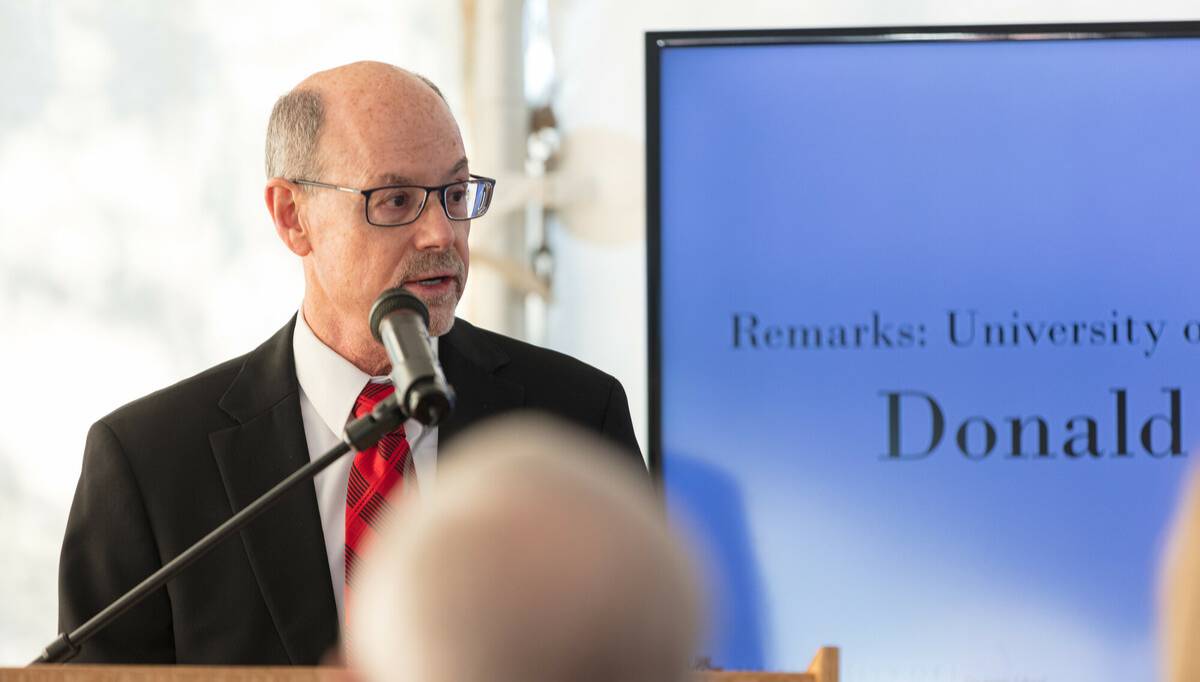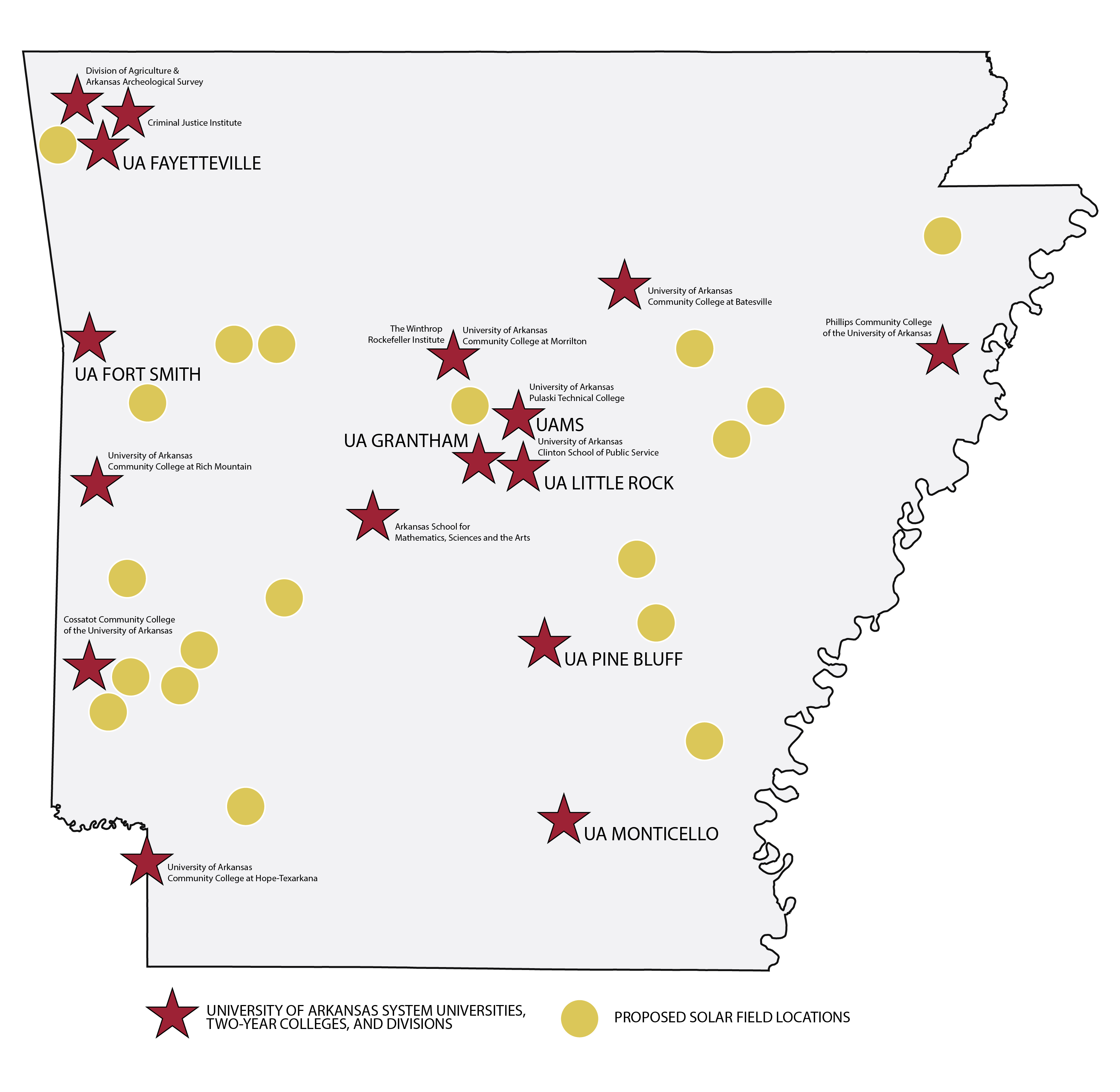Renewable Energy
The University of Arkansas is thoroughly committed to achieving carbon neutrality by 2040, a committment made by the University in 2007. At that time the University of Arkansas became the first higher education institution in thestate and among the first 100 in the nation to commit to the American College and University Presidents’ Climate Commitment. Since this commitment, the University has made huge strides in reducing its greenhouse gas emissions and this solar services agreement is one of the largest strides yet.
U of A Division of Agriculture Solar Array
Size: 3.6 Megawatts DC
Area: 20 acres
Power production begins: 2023
Projected savings over 25 years: $2.4 million
Percent of electricity provided by the project: 89% of Ag Research and Extension Center
Equivalent trees planted: 2 million
U of A Fayetteville
Solar Array
Size: 4 Megawatts DC
Approximate Area: 20 acres
Power production begins: 2025
Projected savings over 25 years: $3.1 million
Percent of electricity provided by the project: 6% of UA Fayetteville Campus
Equivalent trees planted: 3 million
U of A System
Solar Arrays
Size: 66 Megawatts DC
Approximate Area: 380 acres
Power production begins: 2025
Projected savings over 25 years: $130 million
Number of photovoltaic installations: 18 sites across 13 utility service territories to service 20 campuses
Equivalent trees planted: 43 million

A solar service agreement (SSA) is a partnership in which a third-party energy expert designs, finances, permits, installs, connects, operates, and maintains the photovoltaic system, and a customer, such as the University of Arkansas, agrees to purchase the system's entire renewable energy output for a predetermined time period and rate structure. Sometimes it makes sense to place the array on land owned by the customer and sometimes the land is owned by the third party. In our region, the solar array must be located within our utility provider's service territory. In the U of A's scenario, most of the arrays will be off campus, but within the appropriate utility service territory.
Through a competitive bidding process, the U of A has partnered with Entegrity Energy Partners LLC on two SSAs and Scenic Hill Solar on the largest SSA. These partnerships allow the U of A to hedge against rising utility rates, save millions of dollars, create Arkansas jobs, and significantly reduce greenhouse gas emissions. Entegrity and Scenic Hill Solar will develop the arrays and provide energy as a service to the campuses. The U of A will purchase the entire energy output of the arrays at a specified rate over the 25-year contract term. With no upfront cost, the U of A will be able to cut utility expenses on day one.
Frequently Asked Questions
A solar services agreement is a contract where a buyer agrees to purchase electricity from a renewable energy provider for a set period and price. In contrast, renewable energy credits are certificates that represent proof that a certain amount of renewable energy has been generated. While a SSA involves a direct supply of renewable energy, RECs allow entities to claim the benefits of renewable energy without necessarily buying the electricity itself.
Arkansas will be leading its SEC peers in solar and have the fourth-largest university deployment of solar in the nation. The University of Arkansas is only behind Stanford University and the University of California and Pennsylvania systems.
The university says it will save about $130 million over the 25-year agreement as solar power is delivered to nearly every one of the system’s 20 campuses, units and divisions.
The SSA will help support programs related to production and development of electric vehicles as well as agrivoltaics initiatives, which favor using the same land for both agriculture and solar-energy production, helping advance our state as a leader and an example in the industry.

